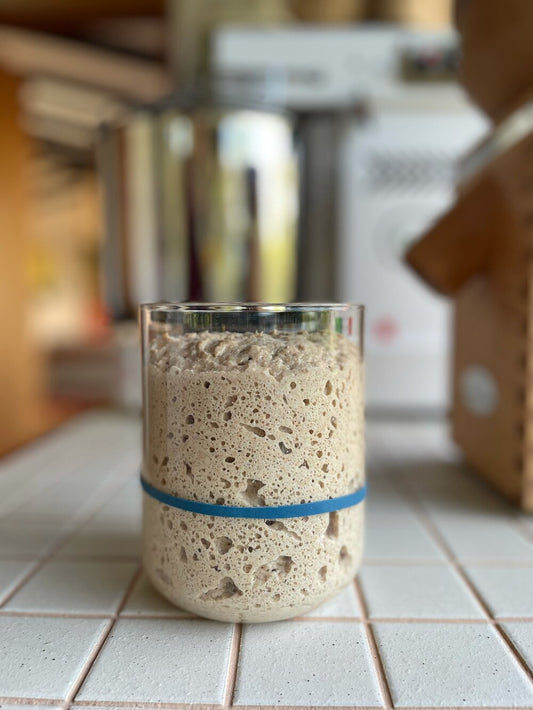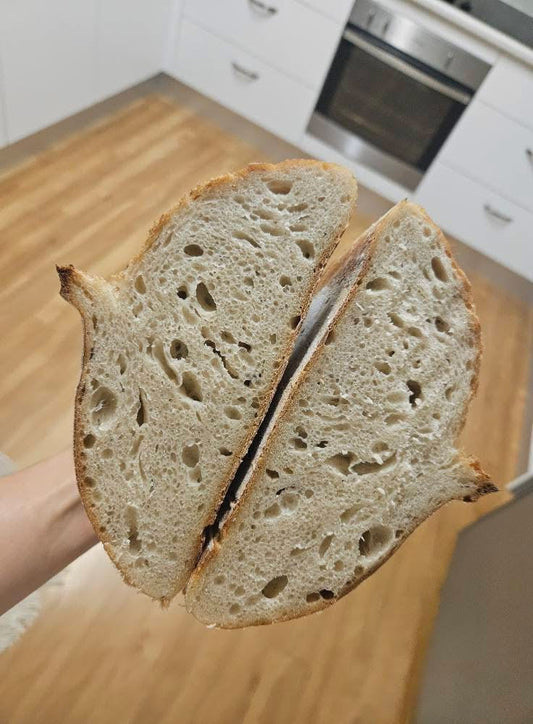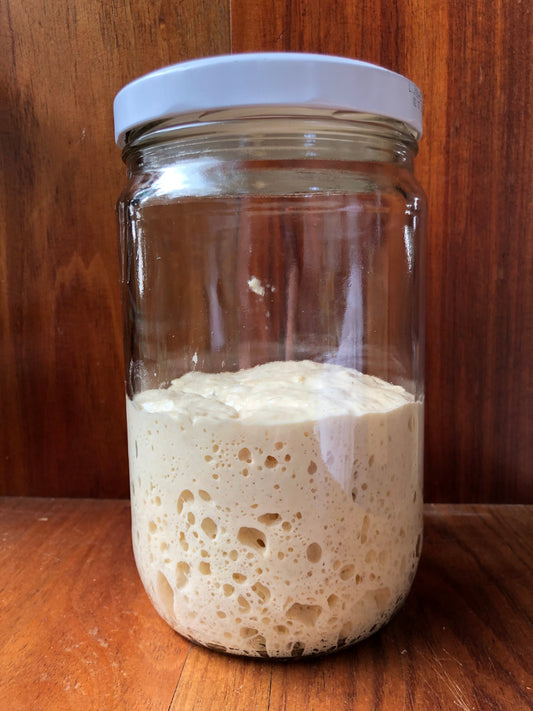How to Keep Your Sourdough Starter Strong and Happy

Above: a healthy whole-rye starter peaking inside Sourdough Mate Starter Jar.

Above: healthy 50/50 white & wholewheat starter inside a jam jar that’s been cleaned and sterilised.
Things You Wished You had Learned from the Beginning
That little jar sitting on your kitchen bench? It’s alive. Inside is a whole community of wild yeast and good bacteria — tiny living beings that turn flour and water into bubbly, flavour-packed sourdough. You can’t see them, but they’re everywhere — in your flour, on your hands, and floating through the air.
When you stop feeding your starter regularly, that community falls out of balance. The bacteria hang in there, but the yeast gets sleepy. That’s when your starter starts to smell sharp or you see that greyish liquid (called hooch) sitting on top. It’s not bad — just hungry and out of whack.
The good news? Even the tiniest bit of yeast left in your jar can bounce back. All it needs is food and warmth. With a few consistent feeds, it’ll spring back to life and be stronger than ever.
What a Strong Starter Looks (and Smells) Like
1. It’s reliable.
A healthy starter is predictable — it doubles around the same time after every feed. When you feed it equal parts starter, water, and flour (a 1:1:1 ratio), you’ll notice it rises beautifully and peaks within a few hours. If it’s slow or inconsistent, it might just need a few extra feeds or a warmer spot.
2. It smells fresh and inviting.
A happy starter smells a bit like yogurt — tangy, but pleasant. If it smells like vinegar or nail polish remover, that’s a sign it’s too acidic and needs some regular feeding to reset the balance.
3. It tastes balanced.
If you’re game, taste a tiny bit! A strong starter tastes mildly sour — not harsh or bitter. If it makes you wince, it’s probably a bit neglected and needs a few days of care to get back to its best.
Keeping Your Starter Happy in Aussie Kitchens
Here’s how to keep your sourdough starter in top shape, no matter where you are in Australia:
Feed it often: Daily if it lives on your bench, or at least once a week if it’s in the fridge.
Adjust for the weather: In summer or humid spots (looking at you, Queensland), your starter will be more active — so smaller, more frequent feeds work best. In cooler climates (like Tassie or Victoria), keep it somewhere warm, like near a sunny window or beside your kettle.
Use fresh local stoneground flour: Using fresh local stoneground flour is best — it’s full of natural enzymes and wild yeast that make your starter thrive. The richer flavour and higher nutrient content help create stronger, more balanced fermentation (and better bread).
Keep it cosy: Your starter loves temps around 24–27°C — similar to a mild spring day.
With a little routine and care, your starter will stay strong, balanced, and ready to bake. Remember — your starter’s not fussy, it just needs consistency and a bit of love. Feed it often, use fresh local flour, and it’ll reward you with beautiful, bubbly loaves every time.






